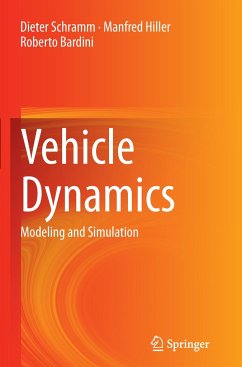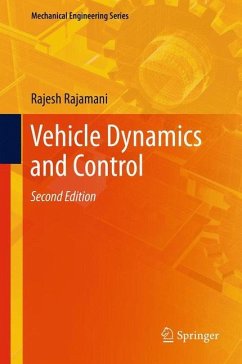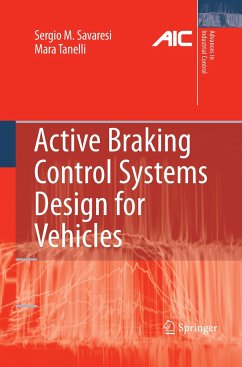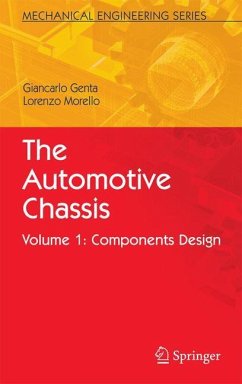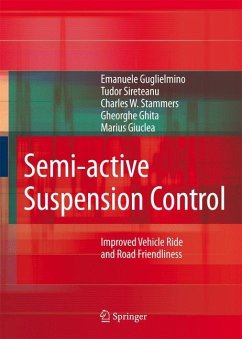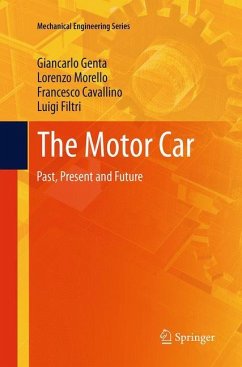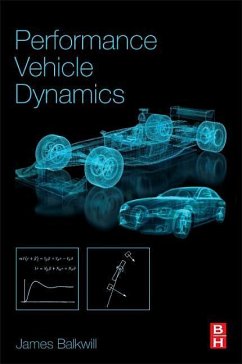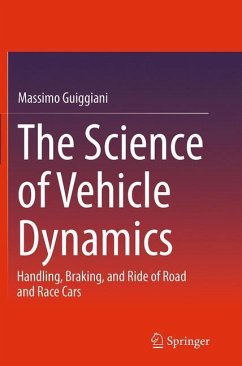
The Science of Vehicle Dynamics
Handling, Braking, and Ride of Road and Race Cars
Versandkostenfrei!
Versandfertig in 6-10 Tagen
92,99 €
inkl. MwSt.
Weitere Ausgaben:

PAYBACK Punkte
46 °P sammeln!
Vehicle dynamics is often perceived as a quite intuitive subject. As a matter of fact, lots of people are able to drive a car. Nevertheless, without a rigorous mathematical formulation it is very difficult to truly understand the physical phenomena involved in the motion of a road vehicle.In this book, mathematical models of vehicles are developed, always paying attention to state the relevant assumptions and to provide explanations for each step. This approach allows for a deep, yet simple, analysis of the dynamics of vehicles, without having to resort to foggy concepts. The reader will soon ...
Vehicle dynamics is often perceived as a quite intuitive subject. As a matter of fact, lots of people are able to drive a car. Nevertheless, without a rigorous mathematical formulation it is very difficult to truly understand the physical phenomena involved in the motion of a road vehicle.
In this book, mathematical models of vehicles are developed, always paying attention to state the relevant assumptions and to provide explanations for each step. This approach allows for a deep, yet simple, analysis of the dynamics of vehicles, without having to resort to foggy concepts. The reader will soon achieve a clear understanding of the subject, which will be of great help both in dealing with the challenges of designing and testing new vehicles and in tackling new research topics.
The book covers handling and performance of both road and race cars. A new approach, called MAP (Map of Achievable Performance), is presented and thoroughly discussed. It provides a global and intuitive picture of the handling features of a vehicle. Moreover, the book also deals with several relevant topics in vehicle dynamics that have never been discussed before.
Massimo Guiggiani is professor of Applied Mechanics at the Università di Pisa, where he also teaches Vehicle Dynamics in the MS degree program in Vehicle Engineering.
Author's website with interactive figures (link: http://www.dimnp.unipi.it/guiggiani-m/interactive.html)
In this book, mathematical models of vehicles are developed, always paying attention to state the relevant assumptions and to provide explanations for each step. This approach allows for a deep, yet simple, analysis of the dynamics of vehicles, without having to resort to foggy concepts. The reader will soon achieve a clear understanding of the subject, which will be of great help both in dealing with the challenges of designing and testing new vehicles and in tackling new research topics.
The book covers handling and performance of both road and race cars. A new approach, called MAP (Map of Achievable Performance), is presented and thoroughly discussed. It provides a global and intuitive picture of the handling features of a vehicle. Moreover, the book also deals with several relevant topics in vehicle dynamics that have never been discussed before.
Massimo Guiggiani is professor of Applied Mechanics at the Università di Pisa, where he also teaches Vehicle Dynamics in the MS degree program in Vehicle Engineering.
Author's website with interactive figures (link: http://www.dimnp.unipi.it/guiggiani-m/interactive.html)



